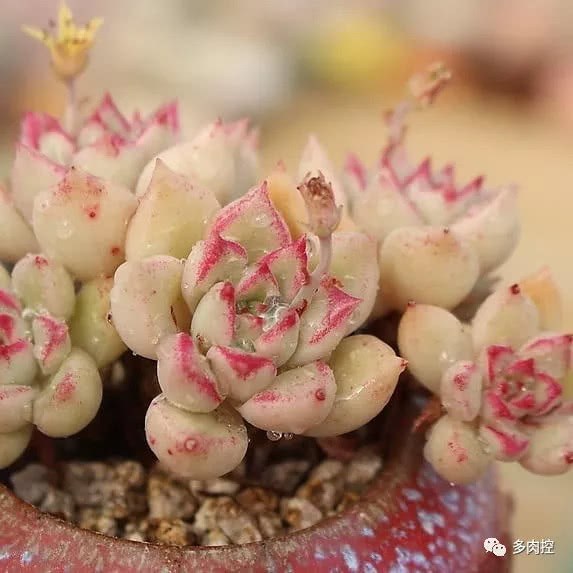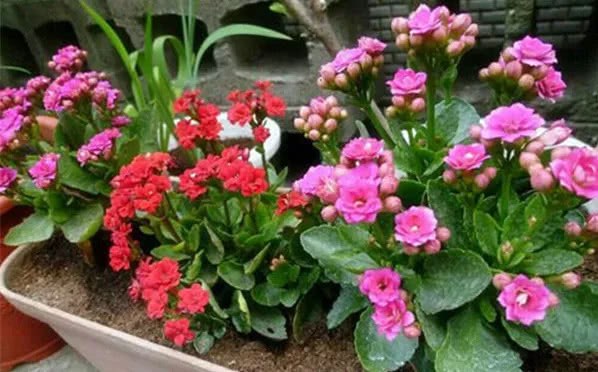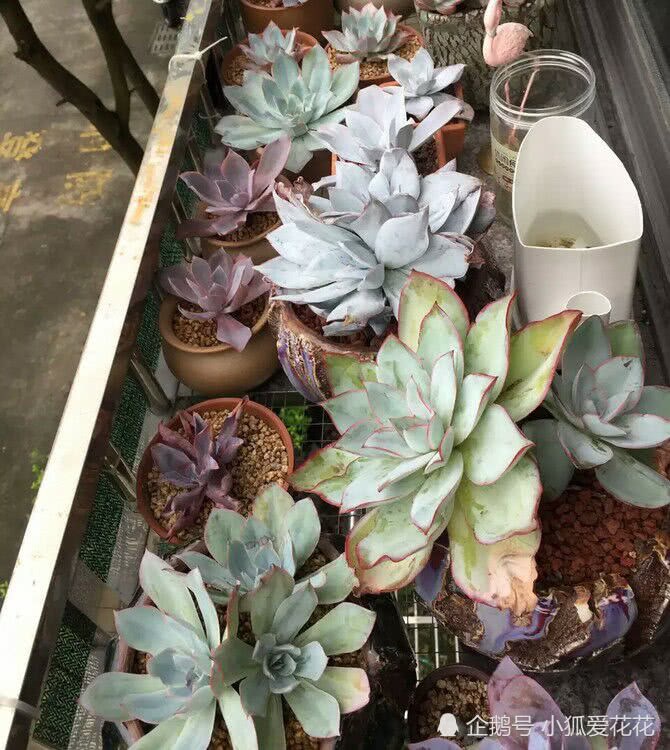After watching this succulent family, you may become more beautiful by yourself.

That Girl
24 HRS (Deluxe)
Olly Murs
00:00/02:56
BGM:that girl
Recently, there is a series of memes that express everyone's feelings. They look like this.
After reading it, I just want to say:
So, can succulent plants learn to be beautiful by themselves?
Actually, yes! At the request of everyone, ahem, today we will talk about how to make succulent plants beautiful by themselves. Lesson 1: matching soil! (the soil of the cactus can also be used for the succulent plants of Sedum.)
The article comes from Marco of Xianzhen Garden.
A link is attached at the end of the article
-geographical issues-
Why should we put the region in the first place? there is no doubt that the region is the biggest factor affecting the distribution of soil, and what kind of proportion is adopted is closely related to your local regional environment.
1) most of the time in the south, the air humidity is high, so you should reduce the use of water-retaining plant materials.
2) the northern region is dry in winter and the air humidity varies greatly in summer, but it is not so humid in the south, so it is necessary to increase the amount of water-retaining plant materials.
The gap in the regional environment brings about the gap in the allocation of soil, which is blindly imitated without considering regional factors, and it is often impossible to achieve the goal as soon as possible, so it often happens that the ball raised by the players on the forum is very good. I either dry the ball or drown it according to the match.
-cultivation site-
The influence of the cultivation site on your soil distribution is mainly reflected in the economy.
If you are a greenhouse, then you certainly can not use particles such as red jade soil, mainly use river sand to solve the cost. The reason is very simple, a few bags of red jade can be exchanged for a truckload of river sand, with the exception of tuhao.
At the same time, different cultivation sites lead to different light intensity and different environment, which will also have a decisive impact on your soil allocation.
The light time is short, and the soil with relatively many particles is needed, otherwise it is easy to grow, while the site with long light time can appropriately increase the ratio of water-retaining plants.
-expectation of the ideal state of the ball-
Why put this question on the table? The reason is very simple, some players pursue the ultimate primary environment, the ball is almost as high as the soil, while others pursue a round shape.
No one is right or wrong, but we all have different ideas, just like twelve volumes of tissue culture and real life, each with their own hobbies.
If you like the state of the original wild ball, there is no doubt that you can use pure granular soil to imitate the most native growing environment.
If you like the round shape, then you should appropriately increase the use of water-retaining materials to prevent the ball from being too dry.
-the effects of different periods of the ball on the soil-
This is the best understanding. Is your ball a seedling or a flowering ball?
If it is a small seedling, it is natural to increase the use of water-retaining materials.
If it is a flowering ball, then you can consider the ratio of pure or almost pure particles. (analogy to flowering seedlings)
After understanding the basic problems, we can carry out targeted soil allocation activities.
According to its water retention capacity, the soil can be divided into three types: water storage substrate, water absorbing granular substrate and pure granular substrate.
The difference between the water-absorbing particle substrate and the pure particle substrate is that the water-absorbing particle substrate will absorb part of the water under the action of immersion, while the pure particle substrate almost does not absorb water.
The main water storage substrates are: coconut soil, peat, peat, vermiculite, water moss, loose scales and so on.
The main absorbent granular substrates are: volcanic rock, red jade, Maifan stone, tung sand and so on.
The pure granular substrates are mainly river sand, green zeolite, perlite and so on.
The above is the personal experience summed up in the use, you are welcome to give advice.
With regard to the introduction of various substrates, there are a lot of relevant materials on the Internet, so we will no longer elaborate on them. Of course, the things on the Internet can not be fully referenced, and we still need to explore constantly in practice.
No matter what base material you use, the proportion of soil is actually very simple.
If you want to keep the ball in its native environment, you need a granular substrate: water-retaining substrate = 9:1 or a pure granular substrate.
If you want the ball to grow quickly, you can use particle substrate: water-retaining substrate = 4:1 or particle substrate: water-retaining substrate = 7:3
If you are going to sow seedlings, you can use granular substrate: water-retaining substrate = 1:1.
Supplement ~
For the succulent plants of twelve rolls, the household cultivation is basically made of red jade soil and deer marsh soil, without volcanic rock or green zeolite, and has higher requirements for water permeability. The pit of Prunus officinalis is too deep, similar to Sedum, but with higher adult grains.
In fact, the cultivation of succulent plants also has something to do with the relationship between the soil and the soil.
But it is more important for us to grope and cultivate more beautiful succulent plants with watering and sunshine.
END
Welcome to contribute, there is a reward, please contact us.
- Prev

The effect of growing flowers with baking soda is excellent.
Baking soda can be said to be a necessary cooking material at home, and it is inseparable from making bread, fermented steamed bread and so on. But what many people don't know is that the effect of using baking soda to maintain flowers is so great! Use one.
- Next

1 pot of meaty cuttings becomes 10 pots of meat toot
In summer, flower friends care carefully every day, for fear that there is something wrong with the meat, did not expect to still not help them escape the destruction of summer, some meat because they can not stand the heat, give up, leaving a pile of dried leaves, this can...
Related
- Wuhan Hospital Iron Tree Blooming Result Was Instantly Frightened by the Gardener Master
- Which variety of camellia is the most fragrant and best? Which one do you like best?
- What is the small blue coat, the breeding methods and matters needing attention of the succulent plant
- Dormancy time and maintenance management of succulent plants during dormancy
- Minas succulent how to raise, Minas succulent plant pictures
- What are the varieties of winter succulent plants
- How to raise succulent plants in twelve rolls? let's take a look at some experience of breeding twelve rolls.
- Attention should be paid to water control for succulent plants during dormant period (winter and summer)
- Watering experience of twelve rolls of succulent plants
- Techniques for fertilizing succulent plants. An article will let you know how to fertilize succulent plants.

